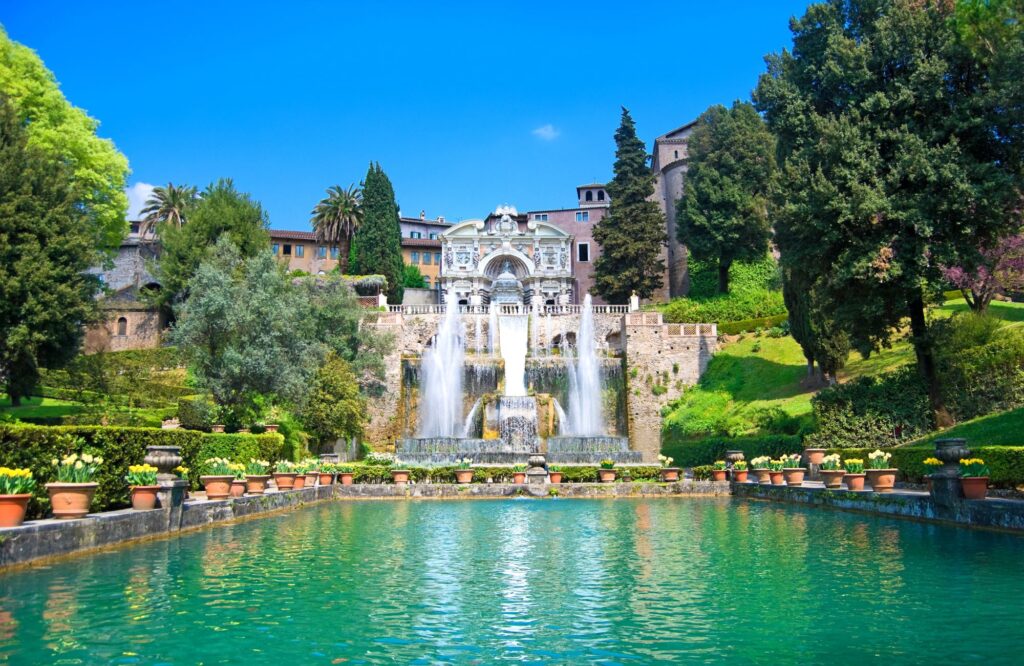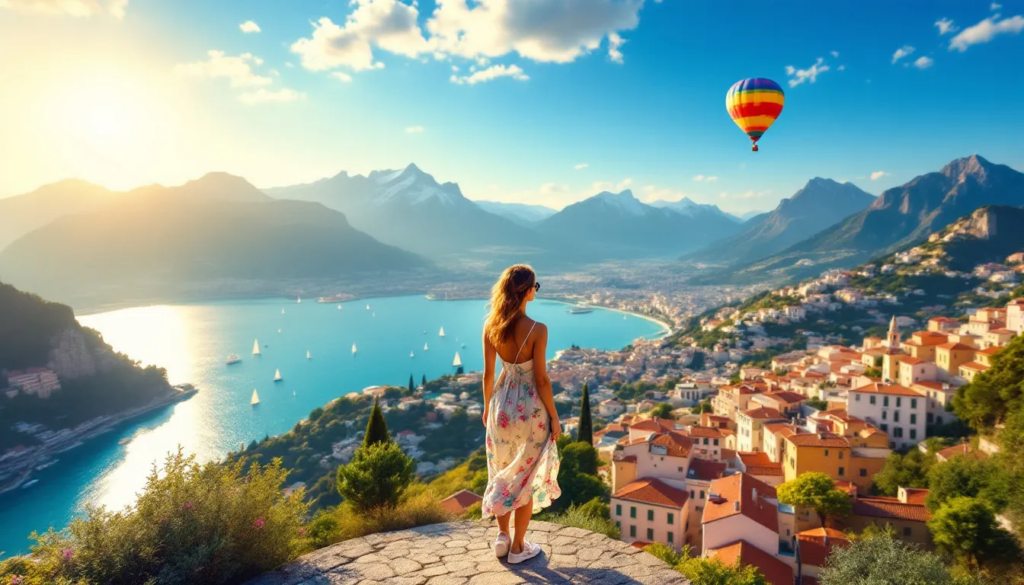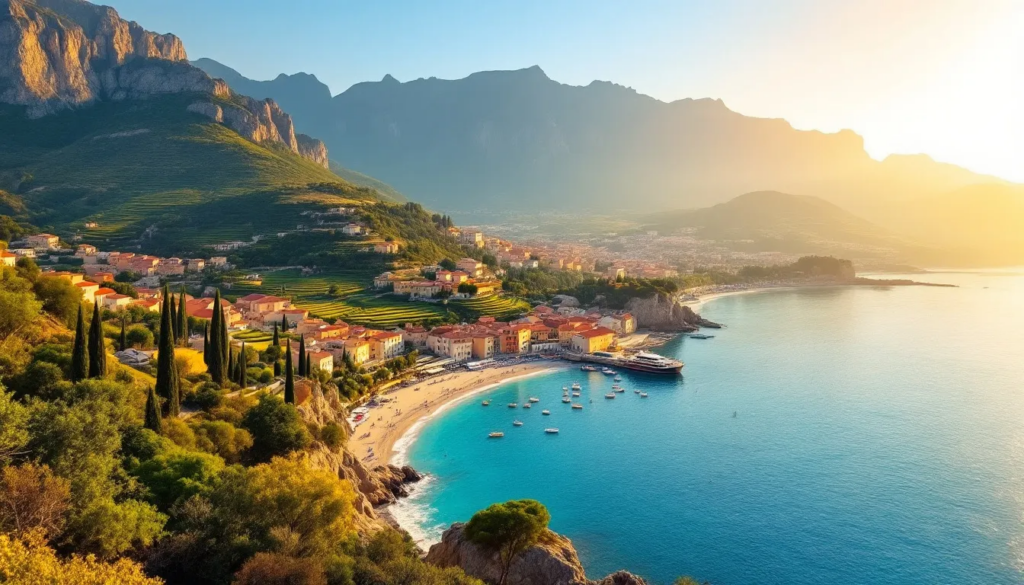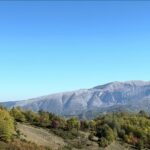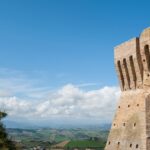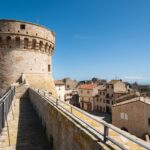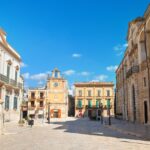Villa d’Este Tivoli, located just outside Rome in the charming town of Tivoli, Italy, is one of the most remarkable masterpieces of the Italian Renaissance. Commissioned by Cardinal Ippolito II d’Este in the 16th century, this lavish villa is renowned for its breathtaking gardens, grand fountains, and artistic architecture that symbolize luxury and human creativity at its finest. Today, Villa d’Este stands as a UNESCO World Heritage site, offering a glimpse into ancient Roman life, luxury, and grandeur.
Whether you’re a history enthusiast, an architecture aficionado, or simply someone looking to explore Italy’s hidden gems, Hadrian’s Villa is a must-see. In this comprehensive guide, we’ll walk you through the villa’s history, architectural highlights, and the must-see attractions within its walls. Additionally, we’ll cover practical tips for planning your visit, so you can make the most of your trip to this ancient masterpiece.
The Origins of Villa d’Este
Villa d’Este’s creation dates back to the mid-16th century, commissioned by Cardinal Ippolito II d’Este, a powerful nobleman and the son of the Duke of Ferrara. The villa was designed as a retreat for the cardinal, who sought to escape the political tensions of Rome and find solace in nature. The architecture and gardens of Villa d’Este were designed by the renowned architect Pirro Ligorio and influenced by earlier designs in ancient Rome, as well as contemporary Renaissance ideals.
The villa’s design was meant to combine the cardinal’s love for classical antiquity with the Renaissance fascination for gardens and hydraulics. The cardinal, known for his wealth and status, spared no expense in the villa’s construction. Villa d’Este became a symbol of his power and taste, and its gardens set the standard for Renaissance garden design across Europe.
Architectural Features of Villa d’Este
Villa d’Este Tivoli is not only celebrated for its breathtaking gardens but also for its remarkable architecture that embodies the grandeur of the Italian Renaissance. Every structure, terrace, and fountain within the estate was carefully designed to harmonize nature with artistry, creating a masterpiece that feels both majestic and serene. The villa’s layout emphasizes symmetry, proportion, and visual storytelling, key elements that define the Renaissance architectural style.
Renaissance Garden Design and Water Features
One of the most remarkable features of Villa d’Este is its gardens, which are among the most elaborate of their kind in Europe. The villa’s gardens are designed on multiple levels, utilizing the natural incline of the land to create terraces filled with fountains, sculptures, and water features. This verticality adds to the visual appeal, creating a sense of flow and movement that mirrors the essence of Renaissance ideals.
The fountains are the highlight of the gardens. The most famous of these is the Fountain of the Organ, a water-powered organ that produces music as it flows. Another notable fountain is the Hundred Fountains, a stunning display of water spouting from 100 small basins, creating an awe-inspiring atmosphere.
These water features are not only visually striking but also exemplify the hydraulic engineering of the time. The use of water to create sounds and movement was an innovative feat, reflecting both artistic expression and engineering ingenuity.
Must-See Architectural Features
- Oval Fountain (Fontana dell’Ovato): The centerpiece of the villa, the Oval Fountain (Fontana dell’Ovato) is an exquisite example of Renaissance symmetry and design. Surrounded by terraces, the fountain features a scenic pool at its base and a unique walkway that allows visitors to walk behind the waterfall and view the grotto. This eye-catching feature offers panoramic views of the villa’s gardens.
- The Hundred Fountains: A long corridor lined with 100 small fountains, this area showcases the genius of hydraulic engineering from the Renaissance period. As you explore, you can cross to the other side of the garden, discovering new perspectives and sections of the landscape.
- Fontana dell’Organo: The Fontana dell’Organo is a remarkable Renaissance water organ fountain. This decorative structure is an engineering marvel, using water power to play music periodically, and is a must-see for its historical significance and unique sound.
- Fontana di Rometta (Rometta Fountain): The Fontana di Rometta is a distinctive and symbolic fountain representing Rome and the Tiber River. Its unique design sets it apart from traditional fountains, making it a notable highlight within the villa’s extensive collection.
- Cardinal’s Apartments: The cardinal’s private quarters are beautifully decorated with frescoes that highlight Renaissance art and architecture.
- Gran Loggia: A large open-air terrace that offers a stunning view of the surrounding countryside.
At the lowest point of the garden, visitors will find some of the most impressive fountains and water features, making it a key area to explore during a visit.
Must-See Attractions at Villa d’Este
Villa d’Este’s gardens and fountains are its main attractions, but there’s much more to explore within the grounds. Visitors often spend about 30-45 minutes at the gardens and another 20-30 minutes admiring the fountains, depending on their interests. For the best experience, it’s helpful to have a planned route through the main attractions, allowing you to make the most of your visit. Don’t forget to take a rest on one of the quiet benches in the gardens to relax and soak in the atmosphere before continuing your tour. Here are the key features you shouldn’t miss:
1. The Fountain of the Organ
The Fountain of the Organ is one of the most unique attractions at Villa d’Este. This extraordinary water feature is powered by a hydraulic system that allows water to play an organ. Many visitors have described their astonishment when they first heard the sound of the water organ, marveling at its unexpected beauty. The combination of water and music creates a serene atmosphere, making this one of the most unforgettable experiences in the villa.
2. The Hundred Fountains
The Hundred Fountains is another must-see feature. Spanning a long corridor, this fountain creates a beautiful, cascading water effect that seems to stretch endlessly. It’s an impressive sight that highlights the engineering ingenuity of the Renaissance.
3. The Lower Garden
The Lower Garden is a beautifully landscaped area featuring additional fountains and plant life. This peaceful area is ideal for relaxation and provides stunning views of the surrounding landscape.
How to Visit Villa d’Este
Planning a trip to Villa d’Este Tivoli is simple and rewarding, especially if you prepare in advance. This UNESCO World Heritage site is one of the most accessible day trips from Rome, offering travelers a chance to explore a masterpiece of Renaissance art and engineering without straying too far from the capital. Knowing how to get there, when to visit, and what to expect will help you make the most of your time in Tivoli.
Location and Transportation
Villa d’Este is located just outside Rome, in the town of Tivoli. The villa is easily accessible by train from Rome’s Termini Station, with the journey taking about 45 minutes. From Tivoli Station, it’s a short bus ride or walk to the villa. Alternatively, you can drive from Rome in about 40 minutes.
Opening Hours and Ticket Information
Villa d’Este is typically open every day from 8:30 AM to 7:00 PM, but it’s advisable to check the official website for the most current information, especially during holidays or special events. Ticket prices are generally €10-12 for adults, with discounted rates available for children and students. Guided tours are available for those wanting a more in-depth experience.
Best Time to Visit
The best times to visit are during the spring and autumn, when the weather is pleasant, and the gardens are in full bloom. Early mornings or weekdays are ideal for avoiding the larger crowds.
Conclusion
Villa d’Este in Tivoli is a true gem of Renaissance Italy, offering visitors a chance to step back in time and experience the grandeur of one of the most impressive gardens in the world. With its breathtaking fountains, architectural brilliance, and rich history, it’s a must-see destination for anyone visiting the Rome area. Be sure to plan your visit, as Villa d’Este provides an experience that is both educational and awe-inspiring.
Looking for an authentic, stress-free Italian adventure? True Colors of Italy offers private, all-inclusive day tours in Le Marche, designed for travelers who value culture, nature, and cuisine. Whether it’s a solo trip or a small group, our curated experiences ensure comfort, insight, and unforgettable memories. Contact us today to plan your personalized Italian journey.
FAQs
Where is Villa d’Este in Italy?
Villa d’Este is located in Tivoli, a town situated about 30 kilometers (19 miles) from Rome. It is easily accessible by train or car, making it a great day trip destination from the capital.
What is Villa d’Este known for?
Villa d’Este is renowned for its magnificent Renaissance gardens, which are filled with stunning fountains, sculptures, and water features. The villa’s most famous attractions include the Fountain of the Organ and the Hundred Fountains, both of which exemplify Renaissance hydraulic engineering.
How do I get to Villa d’Este from Rome?
To get to Villa d’Este from Rome, you can take a train from Termini Station to Tivoli. The journey takes about 45 minutes. From Tivoli Station, you can take a bus or walk to the villa.
What is the history of Villa d’Este?
Villa d’Este was built in the 16th century by Cardinal Ippolito II d’Este and is known for its remarkable Renaissance architecture and gardens. The villa was designed as a retreat and has since become one of Italy’s most iconic examples of Renaissance garden design.

